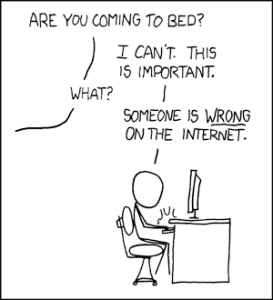Every time I look at my phone these days, the Zoom hate is everywhere. People can’t wait to get back to “real” life, where almost everything of consequence happens in person. My postsecondary student friends are daydreaming about returning to campus in the fall, all of my colleagues seem more than ready to have meetings around the boardroom table again, and my family is already planning crowded social events once everyone is vaccinated.
As for me, I miss the energy of in-person gatherings, a little, but I can’t deny that this “fake” life people can’t abandon quickly enough has been pretty kind to me, accustomed as I am to a world where showing up in person is perceived as essential. Demonstrating competence, commitment and success demands your physical presence, whether or not said presence is logistically required. That hasn’t worked out so well for me.
You see, I am not known for my in-person attendance record outside of work contexts. Chronic pain sufferers often struggle with uneven energy reserves and mobility, and my subpar travel skills as a blind person don’t help. I was the kid who missed a staggering amount of school, forever behind and fighting to catch up. In university, when my pain levels were at their highest, I once missed two thirds of my classes in a single semester. Rarely did I commit myself to non-essential in-person events of any kind, because I hated the shame of last-minute cancellations. Just because people were mostly gracious didn’t mean they weren’t quietly categorizing me as flaky.
In the past year, my schedule has looked quite different. Social events every other week. Book clubs. Committee meetings. Resource group chats. Live readings and author interviews. I’m signing up to everything, planning potential presentations, even doing a little on-the-fly consulting work. I hardly recognize myself.
The difference, of course, is that everything is virtual now. I can attend a book club in Minnesota, watch a live performance in New York City, participate in a Q & A in Colorado. Signing up to serve on committees and resource groups, in and outside work, requires no more of me than an internet connection and my willingness to be useful. No taxis, no transit, no anxiety about finding the venue or locating a seat. No getting lost or looking foolish. Just logging in like everyone else.
If I’m in horrible pain and can’t travel? No problem. I medicate as needed, grit my teeth, and get through the meeting as well as I can. No one needs to know I’m attending from my bed. If my camera stays off, they don’t even need to know I’m blind, necessarily. (The way I am treated before versus after people find out is a story for a whole other post, by the way.)
Until the world opened up for me in terms of accessibility, I assumed I was especially disengaged. I figured I was just not a group person. Not a committee person. Not a ‘show up to everything’ person. A home body, you might say, who didn’t gain energy from interacting with others outside of small, intimate groups.
Sure, I’m still an introvert who is choosy about what she signs up for. I only have so many spoons, and I want to use them wisely. But now I have a better sense of what I’m capable of as a professional and social contributor, because so many of the barriers are temporarily removed. It turns out that I like showing up and getting things done as much as the next person; there was just a great deal in my way. The same might be true for someone who finds in-person activities easy but who doesn’t have a stable internet connection, or gets fatigued by screens, etc.
This is not an original take, I know, but consider this post my plea for a thoughtful, accessible approach to returning to “real” life. It’s past time we adjusted our ideas about what constitutes competence, commitment and success, because not everyone can or should show up in the same ways, and it’s ableist as hell to assume a physically present person is more invested and more worthy than someone who can’t attend.
Lots of people have hated every second of this lockdown lifestyle. Some of us have never felt less locked down. Let’s think seriously about why that is, and what we can do about it.
Perhaps we should start a committee? I’ll send out some Zoom invitations. I do that now.
